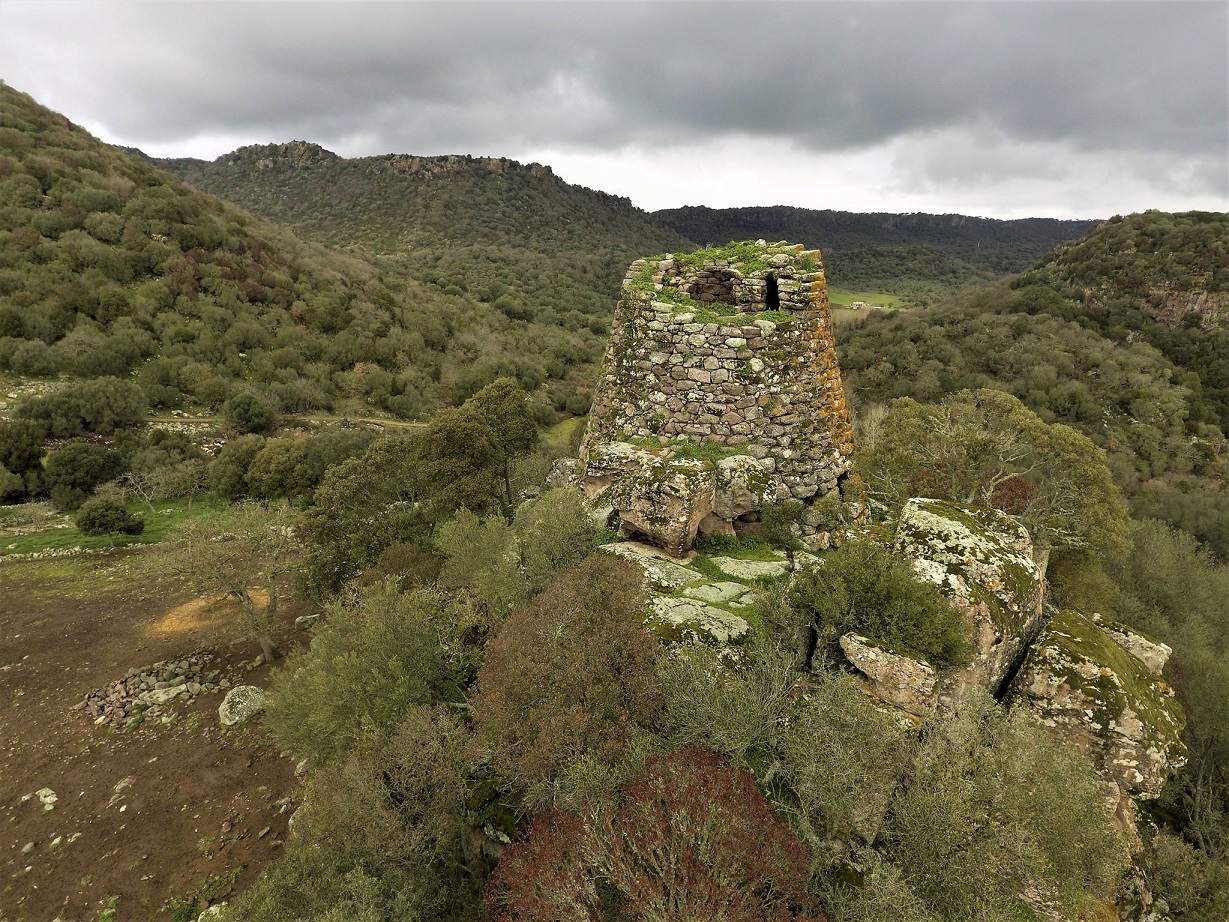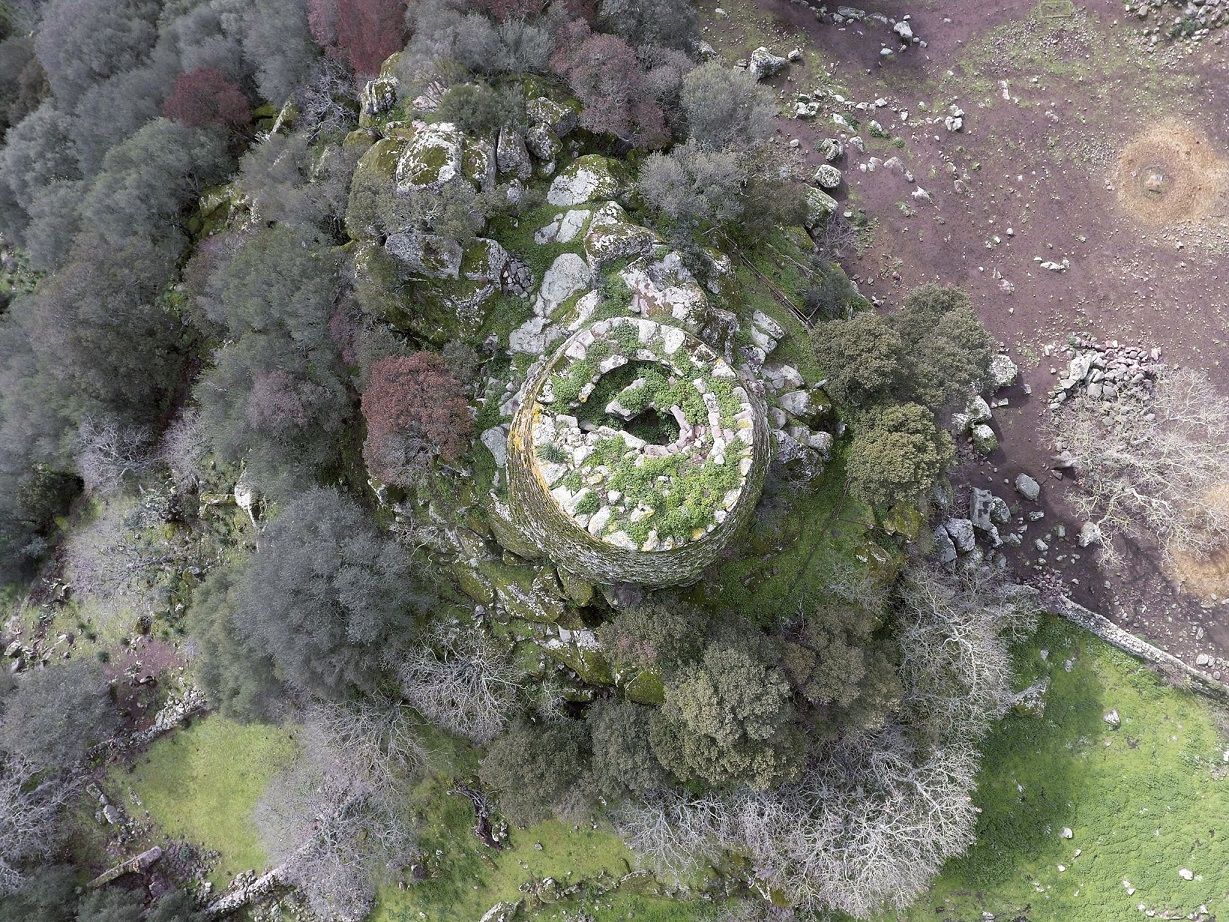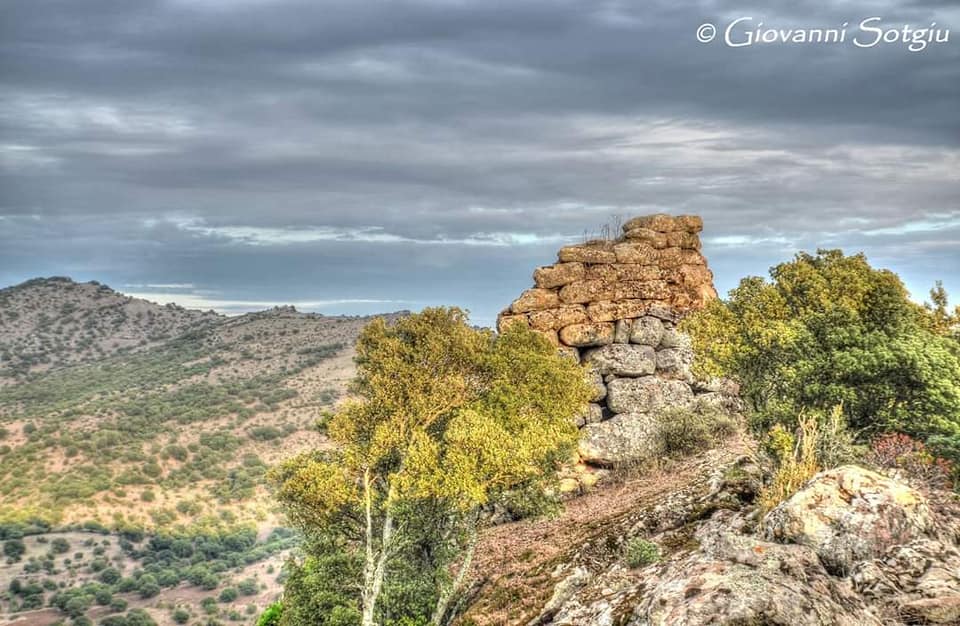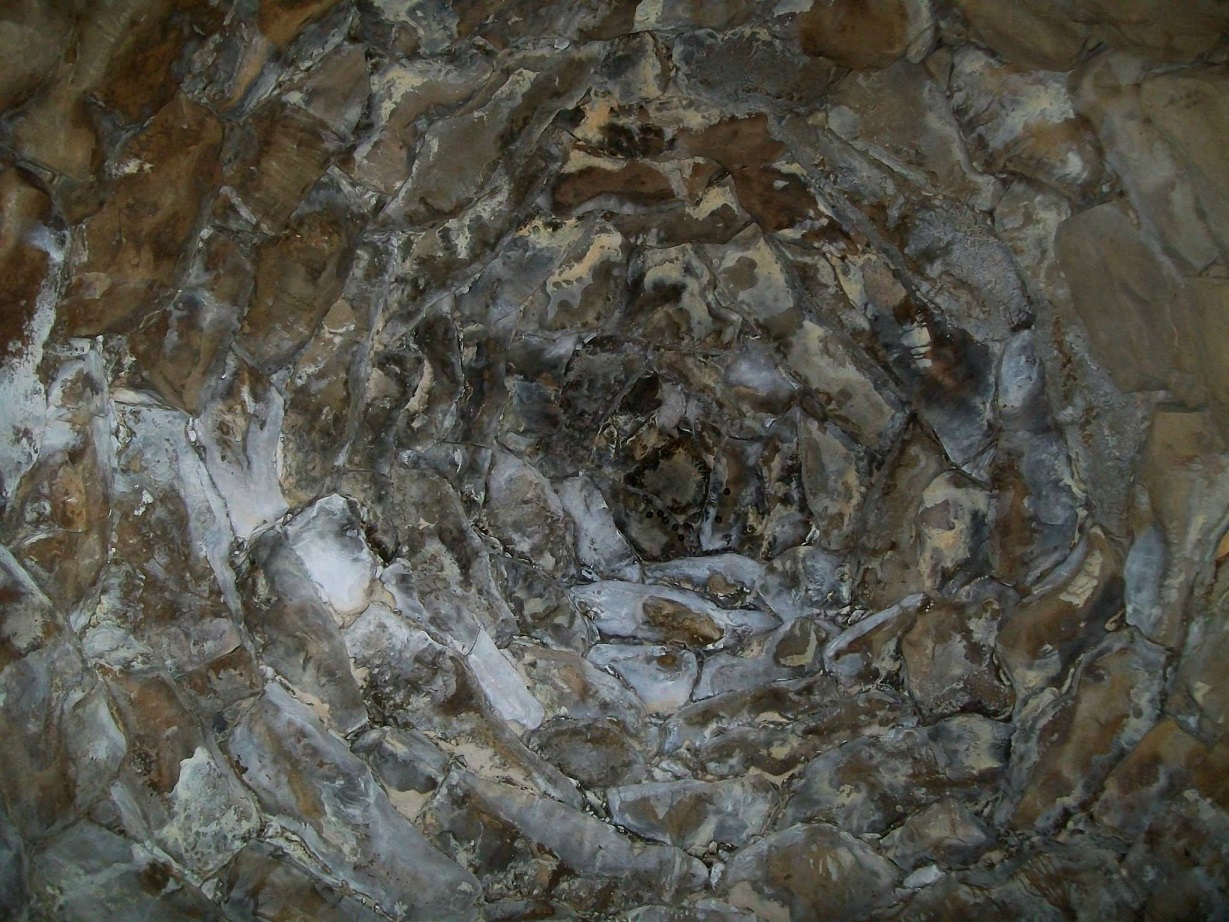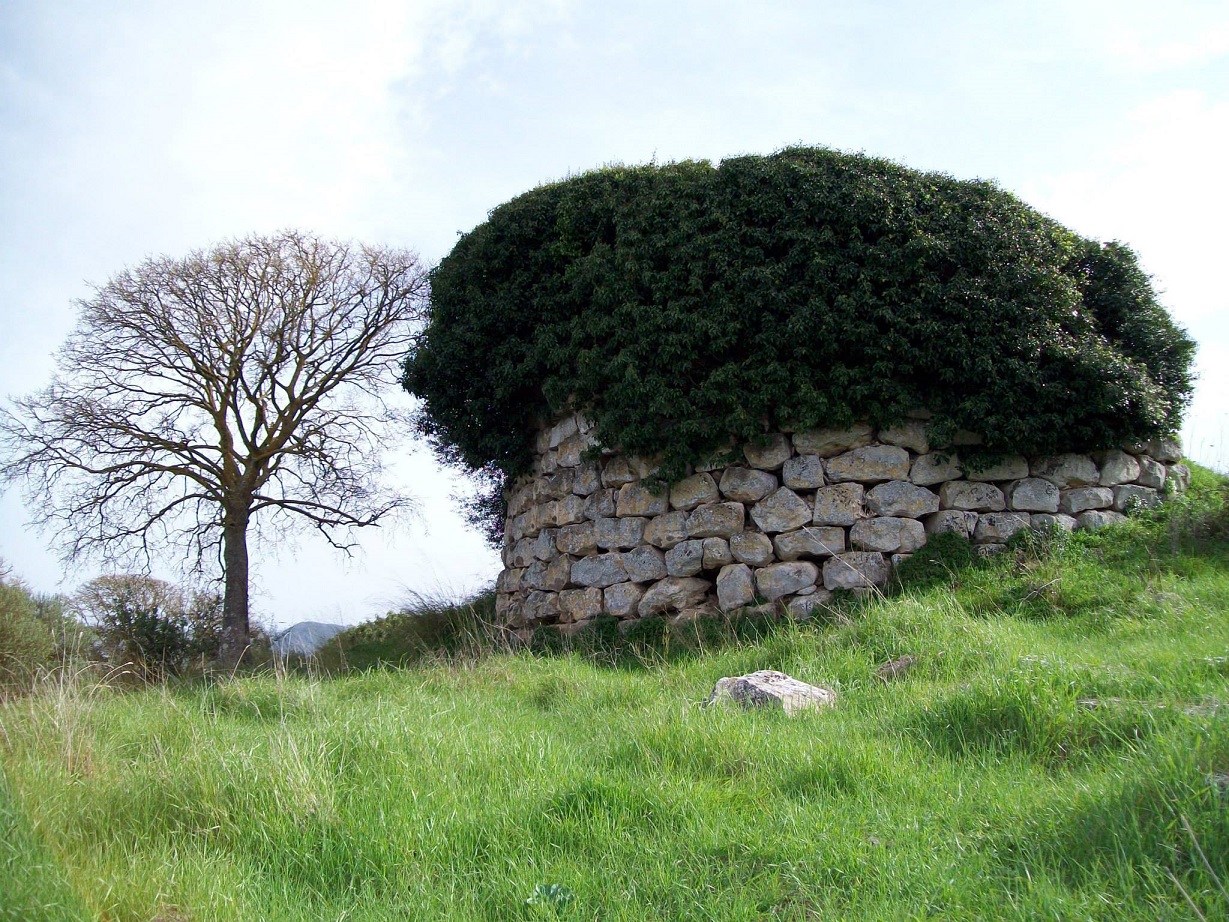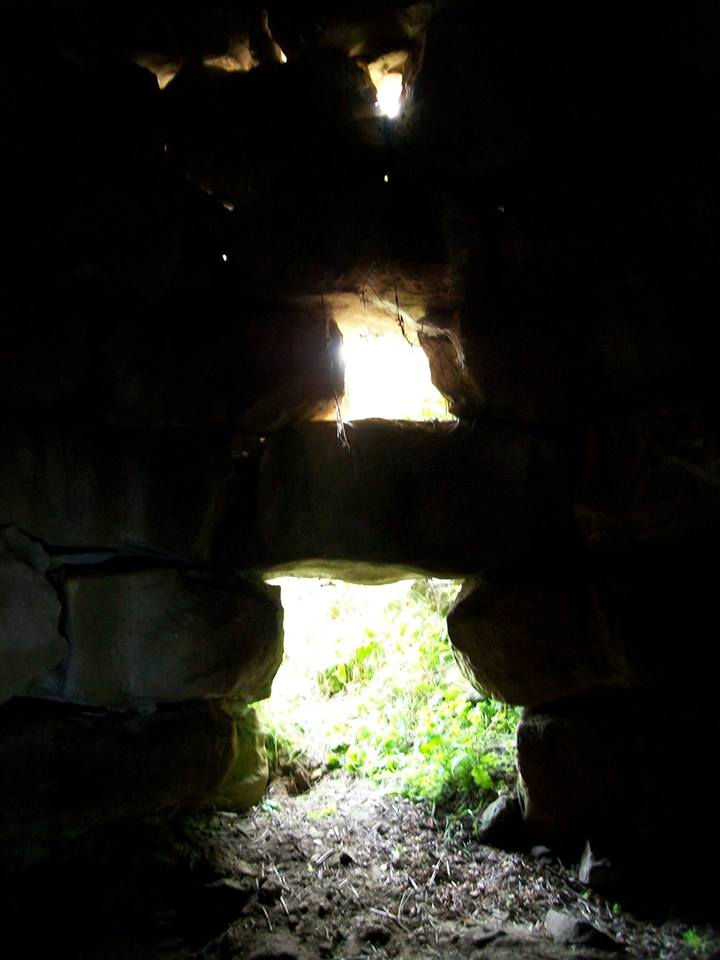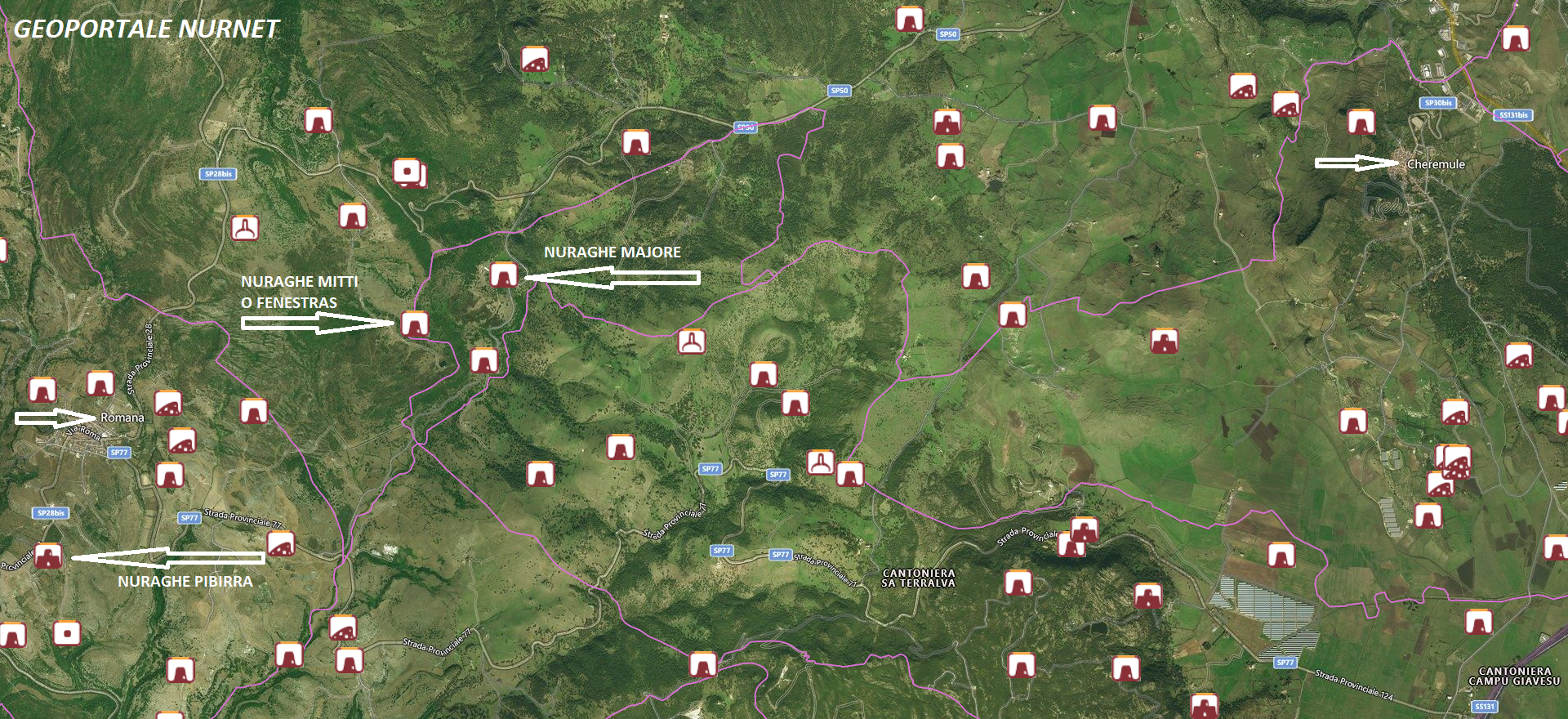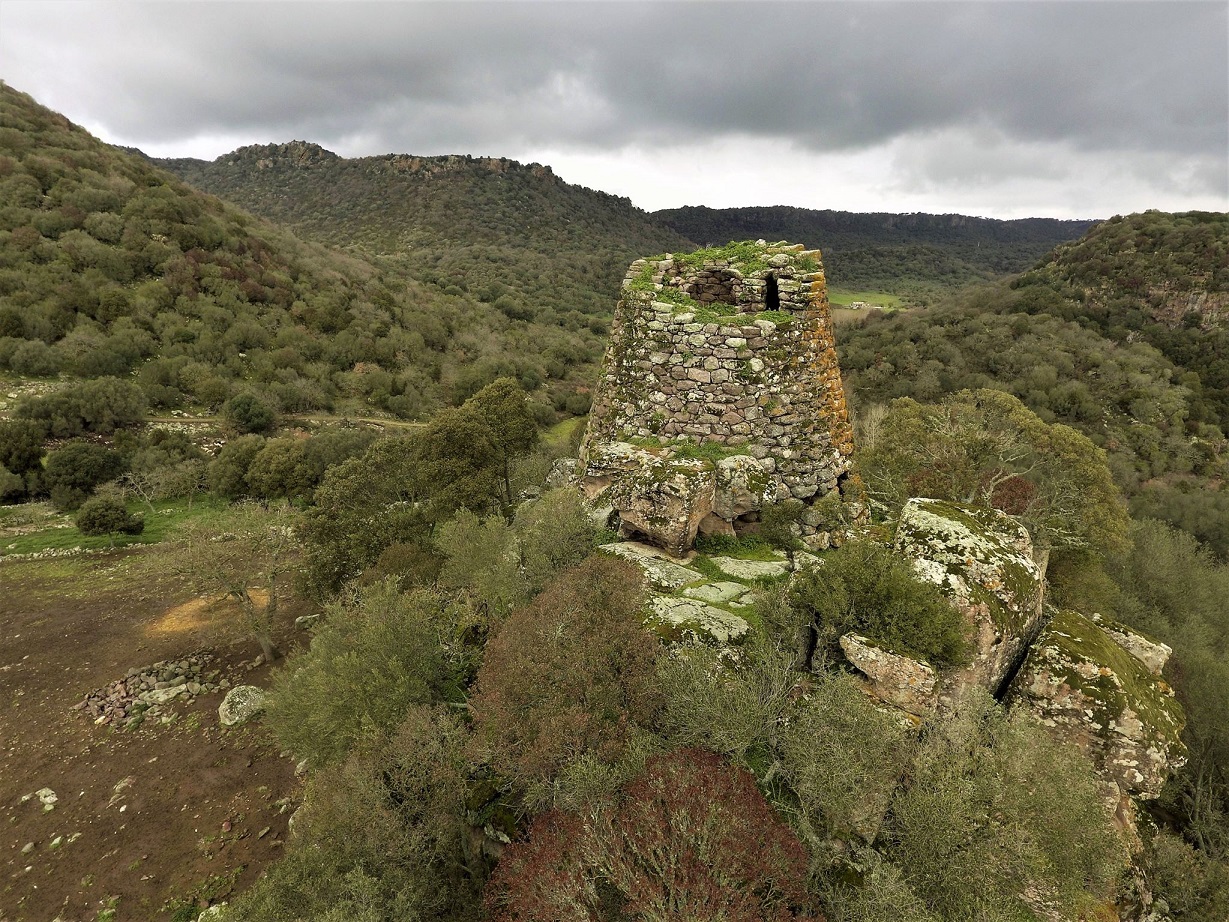30.2, 30a.2 and 31.2: The “Majore” of Cheremule is a typical single-tower nuraghe, which currently rises more than eight meters, with a noticeable tapering towards the top, and features a single entrance on the southeast side. From the entrance, a corridor leads to the central chamber of the ground floor, consisting of a tholos structure, while on the left there is access to a staircase. Since the tower has experienced a significant collapse, restoration work was necessary before the 1980s.
The “Mitti” or “Fenestras,” also in the territory of Cheremule, is a nuraghe located in a panoramic position above a rocky spur near the road between Thiesi and Romana, from where it dominates the underlying landscape where, in particular, the nuraghe Majore is found.
The nuraghe “Pibirra,” in the territory of Romana, takes its name from “pibiri”/pepper. The monument and the surrounding area were the subject of scientific investigations in the early 2000s. The main body, built of limestone, consists of a central tower and at least two other added towers connected by straight curtains. The spiral staircase is visible, while the main body is incorporated within a wall made up of several towers connected by both straight and curved walls.
The photos of the nuraghe Majore, from Cheremule, are by Nicola Castangia and Antonello Gregorini, while those of the nuraghe Mitti or Fenestras, also from Cheremule, are by Giovanni Sotgiu. The photos of the nuraghe Pibirra, from Romana, are by Gigi Rocca.




